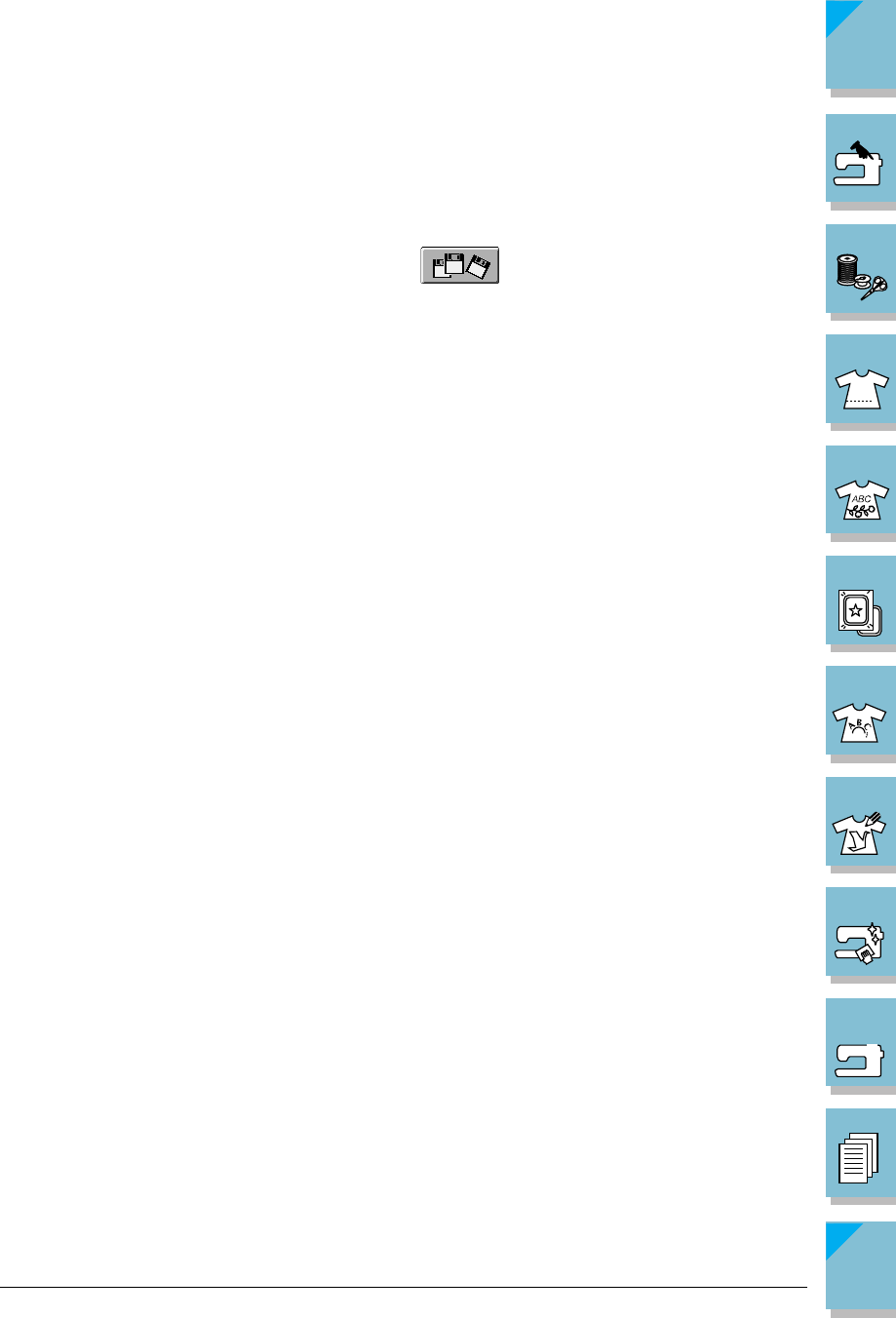
5-2 Embroidery
1 —
2 —
3 —
4 —
5 —
6 —
7 —
8 —
?
!
9 —
CONTENTS
Index
■ About Floppy Disks
• If your machine did not come furnished with a built-in floppy disk drive, you can receive an
upgrade service for your machine, so that it can use floppy disks at your authorized dealer.
• If floppy disks containing data other than those created for this machine, or patterns saved
from your machine, are inserted into your machine, the machine may not operate correctly.
(Only PES, PHC, and DST files can be used.)
• Only insert or remove floppy disks when is displayed, or when prompted to
change disks by the screen (see page 5-18).
• Data saved on floppy disks may be lost or sometimes corrupted. Always make a backup of
any important data saved on floppy disks.
• If the head of the floppy disk becomes dirty, the data can not be read normally. Use a
cleaning disk for floppy disks regularly to avoid problems (see page 8-4). Be sure to follow
the drive cleaning instructions on the package.
• Do not leave floppy disks where bits of thread or lint are likely to collect. These things may
damage the disks. Put the disks in the hard case when storing.
• Do not leave floppy disks near the TV, magnets, or other objects with magnetic properties.
Otherwise, the data on the disk may become unreadable.
• Floppy disks are 2HD type. Be sure to use formatted disks.
• Move the write protect switch on the floppy disk to the unprotected position before using
the disk.
• Only use letters and numbers for the file names of the embroidery data. Using special
symbols may prevent the data from being saved.
• Do not create folders on the floppy disks. If a folder is created and a pattern is stored in the
folder, the machine will not be able to display the pattern.
• PES files made with the embroidery design software system from this company that do not
fit in the design page, or PES files that go over the limit for number of stitches or colors can
not be displayed. Edit the data with the embroidery design software system so the pattern is
within the regulations noted above, and then use the pattern.
• Regarding the Tajima file (DST):
The file name will be displayed on the pattern selection screen.
Up to 8 alphanumeric characters will be displayed for the file name.
In the Tajima format (DST), there is no color information for the pattern, so the pattern will
be displayed with this company’s color order settings. If you want to check the finished
pattern on the screen, change the colors on the display to your preferred colors.


















